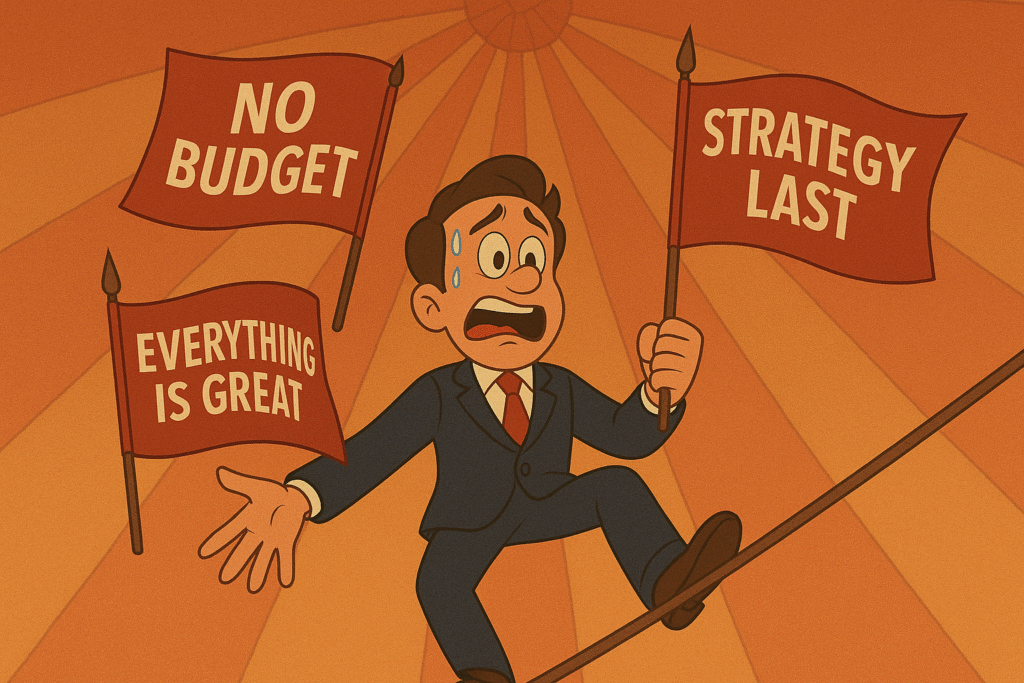
I had one of THOSE calls yesterday.
You know the type — where you can practically hear the sad trombone playing in the background as the caller unveils a parade of red flags.
“We’ve got the name, logo, website, everything is great,” he announced triumphantly within the first three minutes.
Translation: We’ve made all the foundational decisions without strategic input, but now we’d like you to build a strategy that somehow validates these pre-existing choices.
“You’ve just got to do the strategy based on all that,” he continued, seemingly unaware of the logical somersault this statement performed.
Translation: Please reverse-engineer a strategy to fit our tactical decisions, rather than letting strategy inform tactics as nature intended.
The finale was my personal favorite: “Don’t ask me for my budget. I hate when agencies do that.”
Translation: I either don’t have a budget, don’t understand why budget determines scope, or am hoping to negotiate by withholding basic information necessary for a professional relationship.
Can you imagine asking a travel agent to book you a trip without disclosing the budget? How far do you want to go? What kind of accommodations? How long will you be gone?
Budget is the most important parameter, and you should expect to optimize everything based on it.
I found myself wondering how many previous agencies had likely experienced this exact conversation before somehow becoming “not the right fit.”
In I Need That, I discuss how successful products begin with clear problem definition before solution creation. The same principle applies to service relationships.
When clients reverse this sequence — creating solutions before clearly defining their problem — they set everyone up for some very expensive disappointment.
And your agency has to be your cornerstone partner, not your poker opponent.
Product Payoff: Chat leader Slack famously evolved from a failed gaming company called Tiny Speck. Unlike our red-flag caller, founder Stewart Butterfield recognized when his initial direction wasn’t working. Rather than forcing his team to create a strategy justifying the existing game, he pivoted to commercialize the internal communication tool they’d built for themselves.
By being willing to abandon sunk cost bias and preconceptions, Slack grew to 10 million daily active users within six years and sold to Salesforce for $27.7 billion. That success came from prioritizing actual user problems over attachment to existing solutions.
Action for today: Create a “red flag recognition system” for your client or vendor relationships. Document the early warning signs that have preceded previous project failures. Then, most importantly, establish clear protocols for addressing these concerns directly rather than hoping they’ll resolve themselves.
The most expensive sentence in business is “let’s just see how it goes” when you already recognize the warning signs.
Have you encountered a client or partner who brought their own marching band of red flags? Tap that reply arrow and share your experience — and whether you heeded the warning or learned the hard way.
Or reach out to my team of product marketing strategists at Graphos Product.
